S.T.A.L.K.E.R.: Shadow of Chernobyl Updated Hands-On - Single-Player and Multiplayer Impressions
GSC Game World's long-awaited PC shooter is nearing completion. We flew to Kiev, Ukraine, to check out the latest build.
While it might not have had a development period on the scale of Prey or Duke Nukem Forever, GSC Game World has certainly taken its time to deliver S.T.A.L.K.E.R.: Shadow of Chernobyl. The press trip to see the game in Kiev has happened so many times that it's almost a tradition for journalists, but with the game now looking close to complete, THQ is adamant about an early 2007 release. Here, then, is what will hopefully be our final hands-on preview before we can jump into the finished game early next year.
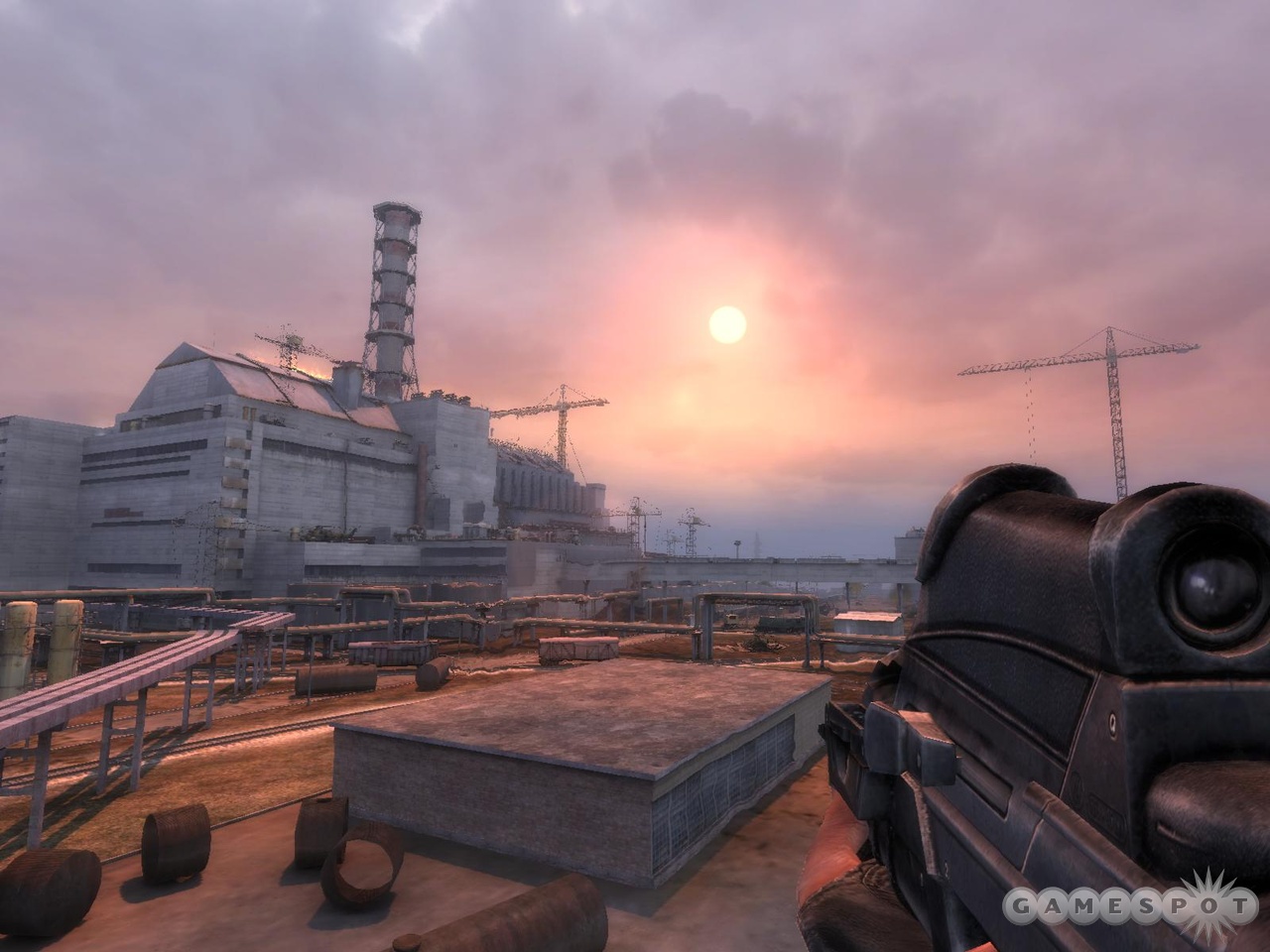
For the uninitiated, S.T.A.L.K.E.R. puts the player within the exclusion zone of the world's worst nuclear disaster. It doesn't model the actual area brick for brick, nor does it follow the real-life events that took place, but GSC Game World has chosen to take advantage of the mythology surrounding Chernobyl and apply a sci-fi storyline to it. Taking place in the future, the game's plot adds in a second nuclear explosion that took place in April 2006, which produced strange new energy forms at the center of the zone. With the area becoming increasingly unstable, scientists decide to investigate. But when no one returns, the exclusion zone is extended and the army comes in to patrol.
Everything seems to be under control by 2008 until mutant creatures begin to appear at the borders and security measures have to be tightened again. While Chernobyl has now become one of the most dangerous places on earth, public interest is growing and a number of people sneak past the borders to find out the truth. Those that dare to venture inside find that it was worth the risk, as the instability in the zone has produced a number of precious artefacts that prove to be valuable in the outside world. With corporations and scientific groups eager to snap up these strange relics, this group of scavengers risk their lives inside the zone to make money and soon become known as the stalkers.
As you should be able to guess by now, your role in the game is to play one of these stalkers, with most of your time spent inside the exclusion zone itself. The introduction to the game shows you, the main character, being rescued from a near-death encounter within the zone and extracted to safety in a nearby location. Waking up on a table in a fevered state, it's clear that you've recovered from a traumatic experience with no knowledge of who you are or where you are. From here, the story of the game is set up for you to explore this free-roaming environment to fulfil the role of a stalker, while also finding out who you are.
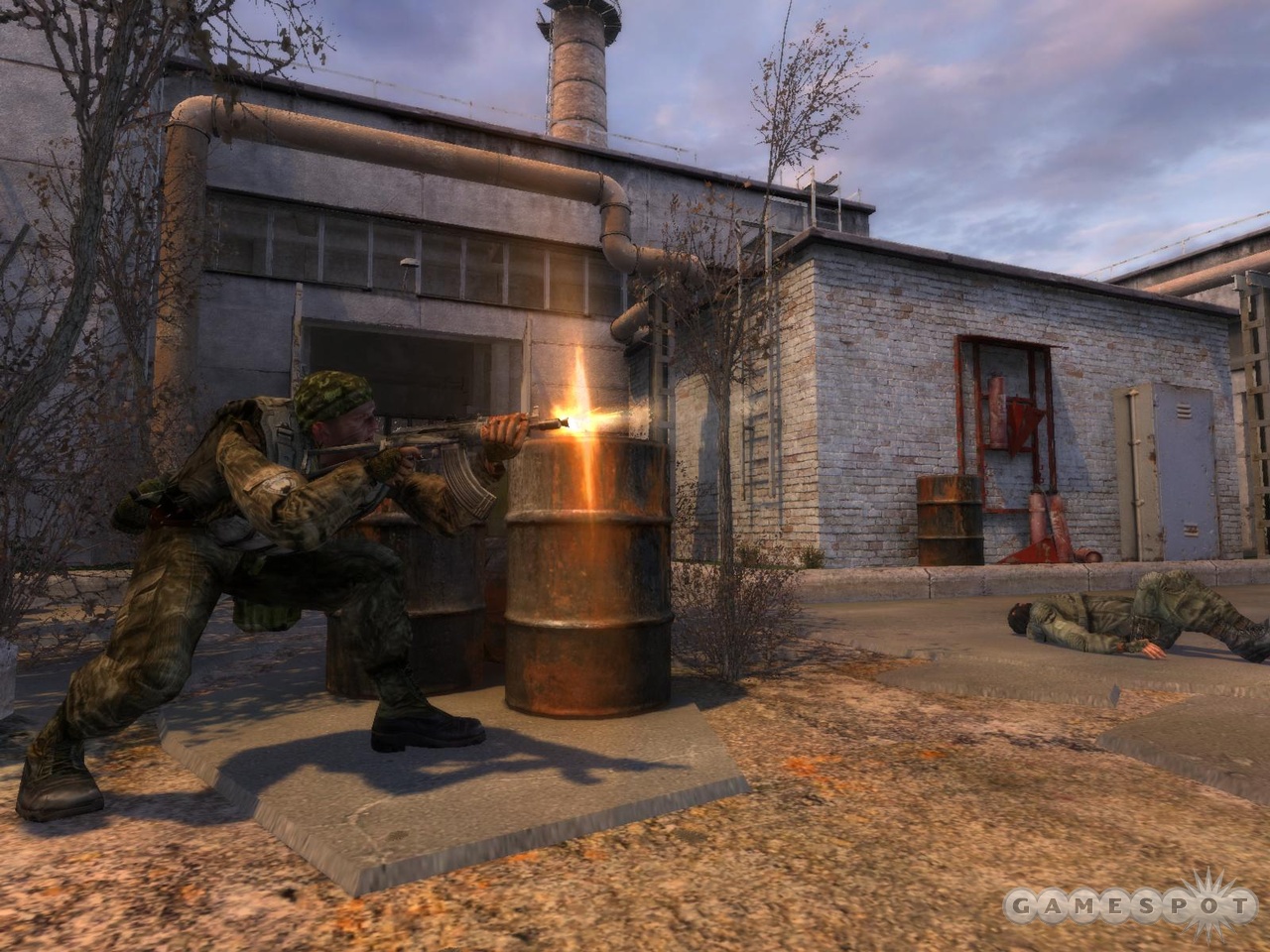
To explain just what it will be like to inhabit this world, project lead Anton Bolshakov walked us through a live demonstration. Using admin tools to show off the A-Life simulation system, Bolshakov set up a level close to the border and populated it with a group of stalkers. In the short term, they seemed interested in finding artefacts to sell, but in the long term, these characters displayed real-life human needs. Non-playable characters automatically communicated with each other, rested, ate food, and showed basic survival needs by killing nearby enemies. In this case, enemies are the monsters that have mutated thanks to the second explosion, but stalkers also have to contend with the army that patrols the area. Somewhere in the middle are the groups of traders and bandits, who have little interest in fighting but exist to control the movement of artefacts and their value.
In total, the ambitious A-Life engine controls more than 1,000 stalkers and monsters at any one time. Inevitably, placing that number of enemies together results in frequent combat between the two sides. Humans can be seen unloading clips into the mutants and heading for cover when they run out of ammunition, while monsters will feast on the bodies of those that don't quite manage to find safe cover. Once the numbers in either camp start to dwindle, then the A-Life engine will begin to migrate characters from other areas to restore the balance. As you'd expect, such an ambitious system is one of the reasons that S.T.A.L.K.E.R. has taken so long to get to market, but if GSC is able to deliver the realism promised by the demonstration then its hard work will have paid off.
As well as implementing brand-new technology in S.T.A.L.K.E.R., the developers have had time to implement a branching storyline that has seven different endings. The team talks about five of these being "false," while two of them are "true." Predictably, you'll have to put in the work to see one of the better endings, as S.T.A.L.K.E.R.'s open-ended, do-anything structure lets you choose how involved you want to be in the game. If you decide to take part in the secondary goals and help those in need, you'll earn one of the better finales, which the makers claim will take 40 to 60 hours to achieve. Other considerations, such as how much you trade and who you decide to kill, will also affect the game's conclusion. While you won't be able to continue the game after completion, the team expects that you will want to go back through a number of times.
While the prospect of a game set in Chernobyl is appealing enough for fans of the macabre, THQ hammered the point home by taking us on a tour of the current exclusion zone. The tour covered the deserted town of Pripryat, a look at the military installations within the exclusion zone, and a nauseating stop only 200 metres away from the exploded reactor itself. The possibility of long-term radioactive damage was apparently minimal, but the need to dodge wild boars as well as sign forms clearing THQ from any cause of death certainly didn't make us feel any safer.
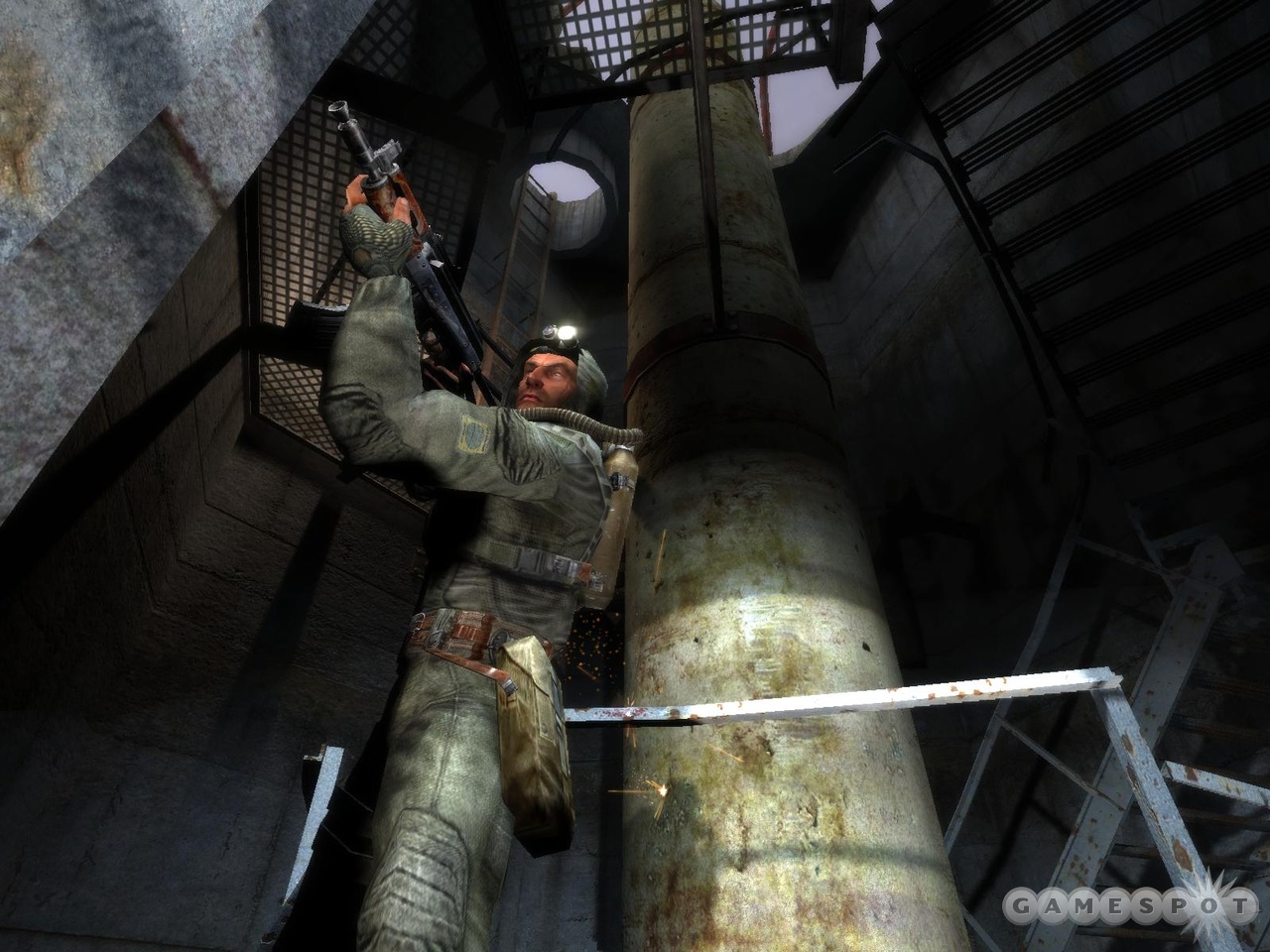
There was a purpose to this grisly form of disaster tourism, though--to see how the designers have modelled Chernobyl and turned it into a game. It hasn't been modelled exactly, but key features from Pripryat such as the eerie Ferris wheel and abandoned town hall have been used to re-create the atmosphere of the zone. While the tour guide was at pains to point out that the freaks or mutants of the game don't really inhabit the zone, it turns out that the seed of S.T.A.L.K.E.R. was planted by the developer's own experiences of living in Ukraine. In the aftermath of the disaster, members of the team saw men in white coats taking Geiger-counter readings around their homes.
Multiplayer Mayhem
Having taken in the tech demos and theory behind S.T.A.L.K.E.R., we sat down for some quality time with the game in Kiev. The first level that we saw was named Agroprom, and it gave us a chance to see the sort of missions that you undertake in the final game. As soon as you arrive on the outskirts of a village, your PDA tells you to hunt down "the gunslinger" after acquiring information from the barman in a nearby town. As you enter Agroprom, you find a friendly stalker faction whose leader has been captured by the military. In return for helping with the extraction, the allies can give you information that will help locate the gunslinger.
As we played through the level for the first time, we found ourselves dying quite frequently, with the opposition cutting through us when we were out in open positions. However, once we began to push the military forces back, the stalker allies moved forward and became more aggressive. Moving away from the area, we could see the A-Life technology in action as a military helicopter flew in to replenish the armed forces in the area. Shortly afterward, a THQ representative demonstrated to us that with a little exploration, you can avoid the fire fight altogether and find the underground opening that would have been revealed if you had extracted the allied leader.
As well as choosing whether or not to engage enemies, you can use different battle tactics. The game encourages a Splinter Cell-like stealth approach, with noise and visibility bars in the corner of the screen. Come running around a corner, and the noise will alert the waiting enemies. Or, forget to check corners and rooftops, and the person that spotted you will alert his buddies. There are ways that you can use the environment to your advantage, though. You can shoot out light bulbs and use night-vision goggles to confuse your enemies, while weapons can be adapted with silencers and scopes. S.T.A.L.K.E.R. even introduces bleeding into the mix, with a trail of blood that will help both you and your enemies find each other if shot. The solution is to use bandages to cover up your wounds, followed by a trusty health pack to replenish your energy.
Although S.T.A.L.K.E.R. appears to be a traditional first-person shooter, there's a role-playing element to managing your inventory. You're limited in the amount of equipment you can carry by weight, so you have to balance the guns and ammo you take with you. You can swap weapons with those from fallen enemies, and we soon found weapons that suited our individual playing style based on their ranges and firing spread. Likewise, although carrying stronger armor will prove useful against enemy attacks, it's heavier and takes up more room in your inventory. As you travel around the zone, there's plenty to scavenge, as well as buy from traders, so you'll be able to experiment with a variety of combinations as you play.
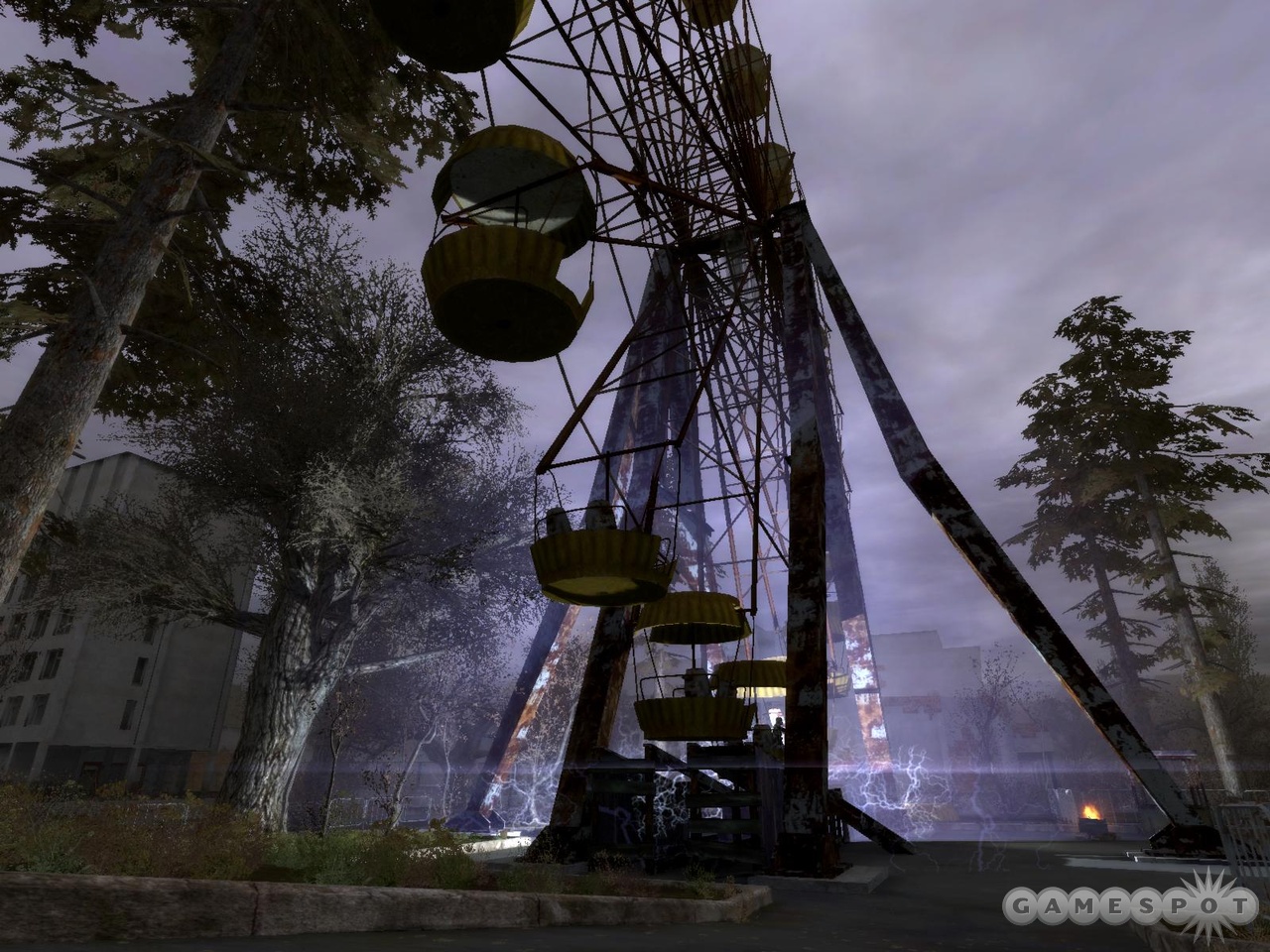
Although guns and armor are staple components of the first-person-shooter genre, the difference in S.T.A.L.K.E.R. is the need to collect artefacts. Produced by anomalies around the game world, these relics give benefits to the bearer such as stamina boosts or protective shields. They can be found by tossing bits of metal into the air in marked places on the map--if the nuts or bolts you toss react strangely, this could indicate the presence of an artefact. If you have no use for them in the short term, you can sell them back to traders to buy other objects such as weaponry. There are also traditional Ukrainian methods of protection on hand, with vodka giving you protection from radiation as well as offering a small amount of health.
As we left the battle area of Agroprom and attempted to find our way to the next objective, we had a chance to try out the in-game PDA. It displays a full map of the zone, as well as a diary of conversations, contacts, an encyclopedia, and a list of nearby stalkers. In short, the PDA is an essential tool for surviving in the zone. All the travel that we attempted was made on foot, and the final game apparently won't include vehicles, after the idea was scrapped in development. After all, Chernobyl doesn't really boast an array of tanks and sports cars, and taking a clapped-out tractor wouldn't really offer a benefit over walking.
While we didn't get to see it in our short time with the game, S.T.A.L.K.E.R. promises a dynamic shift between night and day environments. At night time, the fighting between the military and stalkers calms down, with both groups retreating into camps for rest. Stalkers can be found sitting around campfires, singing songs, and playing the guitar. The zone will still remain dangerous, however, with mutants taking advantage of the night-time cover. These mutants also have other means of concealment, with the bloodsucker able to take on natural camouflage, just like the Predator from the Arnold Schwarzenegger movie.
The final part of the game on show was the multiplayer, with three different modes available. Deathmatch and team deathmatch are self-explanatory kill-or-be-killed modes, while artefact hunt is the S.T.A.L.K.E.R. equivalent of capture the flag. The eight-player deathmatch mode was a blast to play on a local network, and while it offers nothing revolutionary, it's a simple and enjoyable game to get into. As with Counter-Strike, you have to buy guns at the beginning of each round, and while there were places to climb up and hide, the level we played was an open environment that resulted in plenty of quick kills.
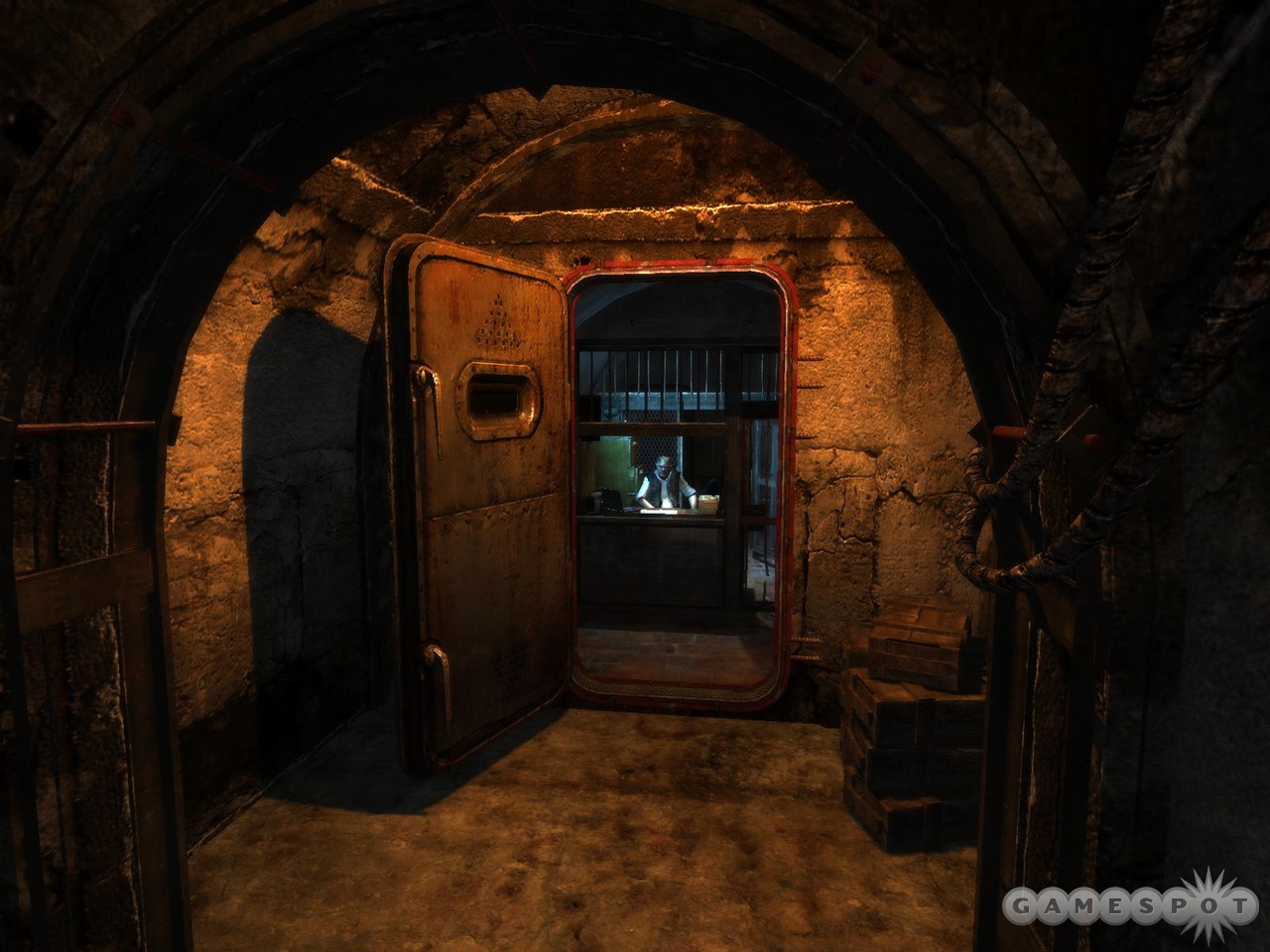
While S.T.A.L.K.E.R. is big on ideas, it currently looks a little dated when compared to its next-generation contemporaries. The protracted development period has clearly been used to polish the A-Life system and branching storyline, and you have to scratch beneath the surface to see these advancements. Thankfully, the game finally looks close to completion, and THQ seems relatively certain that it will see the light of day next year. While S.T.A.L.K.E.R. has more bad endings waiting for its players than it does good, hopefully the game itself will have a happy conclusion after all those years of work.
Got a news tip or want to contact us directly? Email news@gamespot.com
Join the conversation